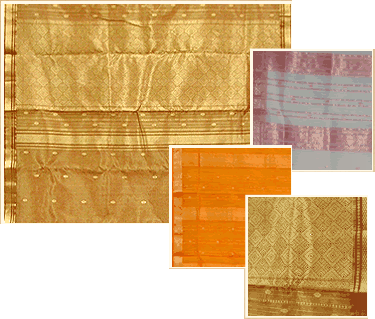 |
|
| 7. Maheshwari, the reversible saree |
|
 |
The Maheshwari Saree has been a highly coveted item since the 18th century.
The town of Maheshwari was established by Queen Ahilya Bai
|
| 18 |
|
|
Holkar who wanted to live away from the hustle bustle of the life of Indore.
The intricately carved stone walls of her palace and temple are the inspiration for the patterns found on Maheshwari Sarees.
Maheshwari sarees are made of cotton and silk. The pure silk Maheshwari Saree is famous for its strength, its elasticity and a matchless
sheen of fabric. The use of zari along with a particular shine of the saree makes it unique. The Maheshwari Saree is a perfect example of
elegance in simplicity. The body of the saree is plain, chequered or has stripes. What sets this saree apart is its border and pallav.
The pallav has five stripes, three coloured and two white alternating which run along its width. The specialty of this saree is that it
has been reversible border woven with golden threads which can be worn on either side. This is known as 'bugdi'. Motifs like guldasta,
Aambuta, Chatai Kinar, Bel Phool, Hansa, Mayur adorn the sarees.
Like Chanderi Sarees, there is a constant reference to nature in Maheshwari sarees as well. The vernacular names of colours bring nature
to life in these sarees. For e.g. Angoori (grape green), Dadimbi (deep pink), Rani (deep mauve pink), Jamla (purple), Chintamani
(peacock blue).
The Maheshwari Saree is indeed an elegant and dignified fashion statement.
|
| 19 |
|
 |
| |
|
|
| |
| Website Homepage |
| Mangalam sarees, Pune, a home to exclusive silk, cotton sarees, Paithani, Kanjeevaram silk sarees, Banarasi sarees, Gadwal, Pochampalli saree, Maheshwari, Chanderi sarees, Patola. |
|
|
|